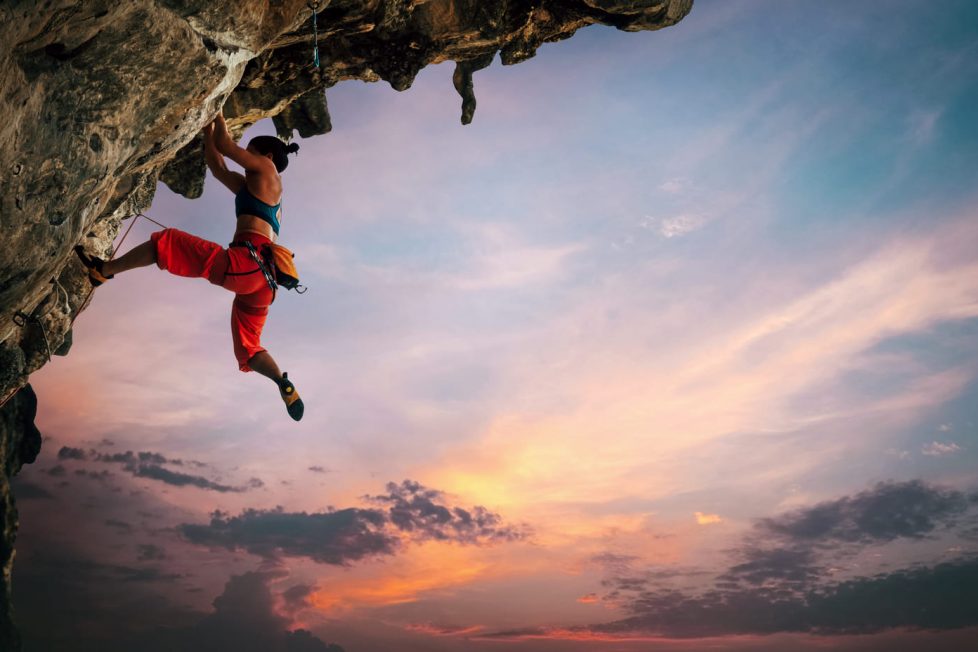Risky sports that will leave you with your mouth wide open

Why do so many athletes keep practicing extreme sports, even though they know the danger of risking their lives?
The thrills given by extreme sports attract many individuals seeking excitement. Many of these extreme sports like snowboarding, surfing, skateboarding, rock climbing, bungee jumping, skydiving, and others, allow one to feel the freedom to challenge yourself, both physically and psychologically, and to perform any type of freestyling that would be nauseating to athletes. However, almost all extreme sports have some elements that could endanger an athlete’s life in comparison to traditional sports. These sports could be defined as “extreme” due to their tendency to be dangerous if not performed carefully or with the right equipment .
After all, to experience the true “adrenaline kick,” these sports must be dangerous. Serious injuries are common among adrenaline junkies and many fatalities are reported every year. To give an example of this phenomenon according to the report of the United States Parachute Association, more than twenty people a year die due to parachuting alone. The effort required by these sports is great, but the supply of adrenaline and other hormones is sufficient to avoid tiredness resulting from exercise. The adrenaline rush increases the acceleration of blood flows to the muscles and brain, relaxes the muscles, and lastly helps with the conversion of glycogen into glucose in the liver. For every extreme sports athlete, this adrenaline rush is never enough since they are always seeking stronger emotions.

As if jumping out of a helicopter to go skiing (heli-skiing) wasn’t extreme enough, there are some thrill seekers who combine skiing and flying even more. Paraskiing is a combination of skiing (or snowboarding) and parasailing. The skier wears a parasail and when they pick up enough speed to make the parasail rise, they’re lifted off the ground and start soaring. Some parasailers fly for the entire run while others bounce back and forth between sailing and skiing. It essentially combines two top extreme sports into one ultimate extreme sport. To get to an even more extreme level, some athletes combine heli-skiing and paraskiing – which opens up a whole new world of terrain.
Right now, wingsuit flying is probably the closest humans can get to controlled, non-machine-assisted flying. Wingsuit flying is a variation of sky diving in which the “pilot” or jumper wears a special suit that essentially makes them look like a flying squirrel. This specialized suit features “wings” along the side of the body and between the legs. The wings have air pockets that give the pilot more lift, allowing them to fall slower and control where they go with an amazing amount of precision. Wingsuit flying can take place from a helicopter or off a base and some expert flyers get incredibly close to mountainsides and even cruise in a controlled free fall through ravines.
What could make walking a tight rope harder? When that rope isn’t actually taunt. You might have seen slacklines set up at festivals for slackliners to exhibit their skills and to give the general public a chance to try this extreme sport (albeit, without the possibility of falling very far). Where slacklining turns into a top extreme sport is when it becomes known as highlining. A slackline is set up high off the ground (typically between buildings or cliffs) and a slackliner crosses without a safety net or pole for additional balance. The only thing keeping them secure while the line moves and sways is their intense balance and a small safety harness.
When skiing or sledding on snow isn’t extreme enough, it’s time to take a trip to an active volcano. Volcano boarding or volcano surfing is exactly what it sounds like, you slide down the side of a volcano that’s covered in cool cinders or ash. And by ash we mean mostly little bits of sharp volcanic rock. After hiking over rocks and rubble to the peak, riders go down the volcano on makeshift plywood toboggans, which makes this extreme sport accessible to anyone. The best of the best, though, can surf down the slope while standing on the board.
When you’re scuba diving, you’re literally in a situation where you could be physically unable to breathe if something goes wrong. Most divers have oxygen tanks with them, but some athletes disregard this normal equipment and opt to freedive. Like many of these top extreme sports, freediving is exactly what it sounds like – a diver goes down with no survival equipment other than flippers. They plan on making the descent and ascent on a single breath of air. The pressure changes of deep diving, physical exertion it takes to climb back to the surface and mental panic that can set in make this more than just holding your breath for a really long time.
